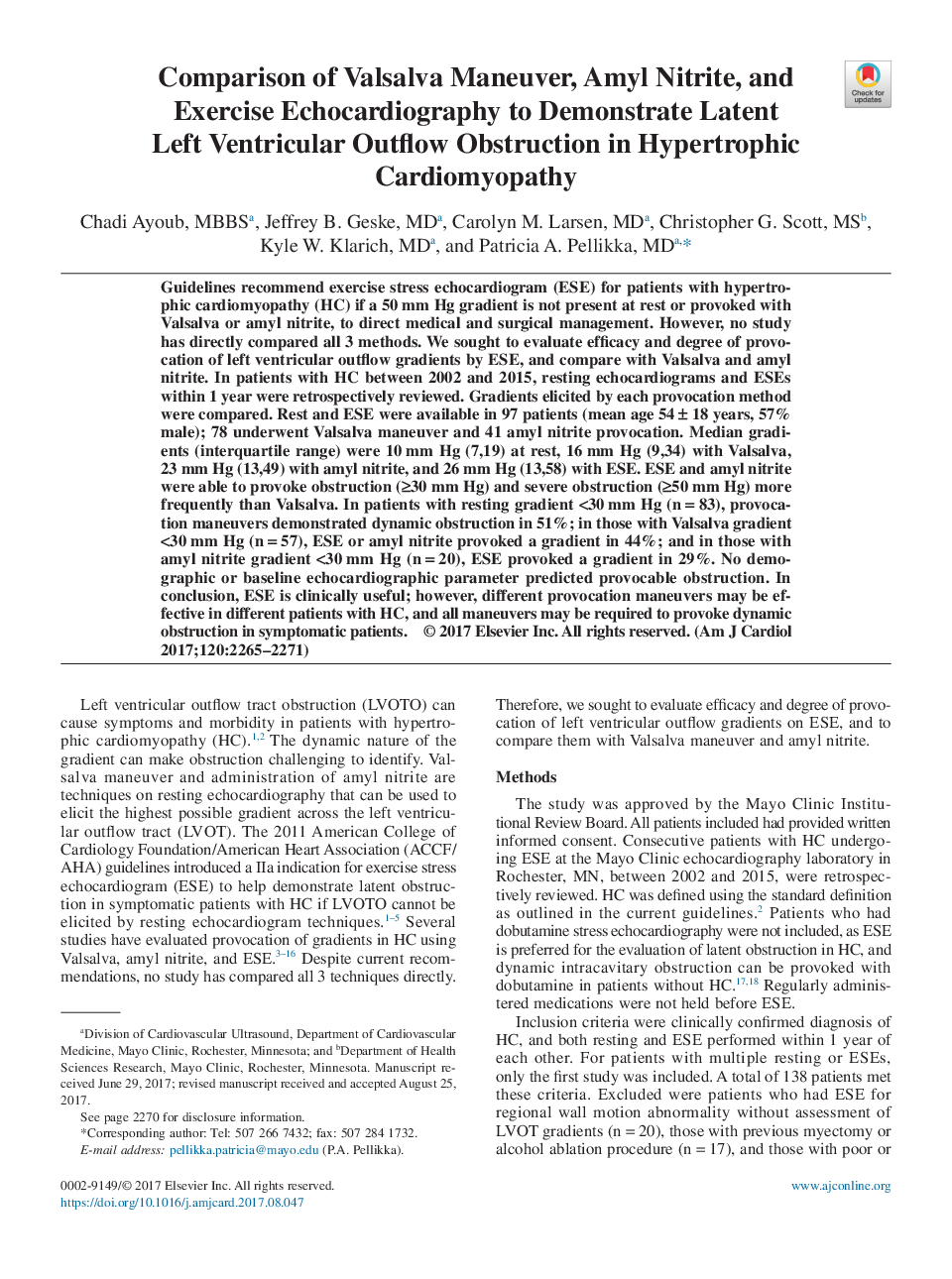| Article ID | Journal | Published Year | Pages | File Type |
|---|---|---|---|---|
| 8651630 | The American Journal of Cardiology | 2017 | 7 Pages |
Abstract
Guidelines recommend exercise stress echocardiogram (ESE) for patients with hypertrophic cardiomyopathy (HC) if a 50âmm Hg gradient is not present at rest or provoked with Valsalva or amyl nitrite, to direct medical and surgical management. However, no study has directly compared all 3 methods. We sought to evaluate efficacy and degree of provocation of left ventricular outflow gradients by ESE, and compare with Valsalva and amyl nitrite. In patients with HC between 2002 and 2015, resting echocardiograms and ESEs within 1 year were retrospectively reviewed. Gradients elicited by each provocation method were compared. Rest and ESE were available in 97 patients (mean age 54â±â18 years, 57% male); 78 underwent Valsalva maneuver and 41 amyl nitrite provocation. Median gradients (interquartile range) were 10âmm Hg (7,19) at rest, 16âmm Hg (9,34) with Valsalva, 23âmm Hg (13,49) with amyl nitrite, and 26âmm Hg (13,58) with ESE. ESE and amyl nitrite were able to provoke obstruction (â¥30âmm Hg) and severe obstruction (â¥50âmm Hg) more frequently than Valsalva. In patients with resting gradient <30âmm Hg (nâ=â83), provocation maneuvers demonstrated dynamic obstruction in 51%; in those with Valsalva gradient <30âmm Hg (nâ=â57), ESE or amyl nitrite provoked a gradient in 44%; and in those with amyl nitrite gradient <30âmm Hg (nâ=â20), ESE provoked a gradient in 29%. No demographic or baseline echocardiographic parameter predicted provocable obstruction. In conclusion, ESE is clinically useful; however, different provocation maneuvers may be effective in different patients with HC, and all maneuvers may be required to provoke dynamic obstruction in symptomatic patients.
Related Topics
Health Sciences
Medicine and Dentistry
Cardiology and Cardiovascular Medicine
Authors
Chadi MBBS, Jeffrey B. MD, Carolyn M. MD, Christopher G. MS, Kyle W. MD, Patricia A. MD,
